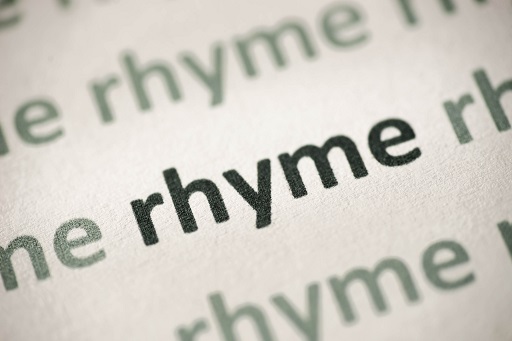6 Rhyme

Activity 17
Now listen to Track 4, on which Jackie Kay and Paul Muldoon talk about rhyme.
Click below to listen to Track 4.
Transcript: Track 4 Rhyme
So-called purists sometimes claim that unrhyming poems aren’t poems at all. But Anglo-Saxon poetry didn’t rhyme in the way that we usually think of rhyme. Even English epic or dramatic poetry from the last few hundred years needn’t rhyme. Nevertheless, many teachers like to hammer into impressionable young heads the notion that proper poems rhyme. The assumed alternative is anarchy: a disregard for form and history.
Because rhyme is very seductive, we need to be careful not to use it for its own sake, if this practice doesn’t suit the poem. A light-hearted poem might rely on strong rhyme (and a dum-de-dum rhythm). However, a more facile rhyme won’t suit a more contemplative poem, for example.
If we impose rhyme too early in the process, we risk sacrificing the content to the form, before we’ve even discovered the theme of our poem. When we write, we’re panning for gold. We often find we’re not actually writing the poem we think we’re writing! The ability to recognise our true theme, and to go beyond our first impulses or ideas, is partly what distinguishes a competent poet from a good one.
Rhyme creates echoes which refer you to other portions of the poem. Rhyme can reiterate an image or idea, making it memorable, even when used in a subtle way. What else? Of course rhyme is pleasurable and satisfying:
The basic rhymes in English are masculine, which is to say that the last syllable of the line is stressed: ‘lane’ rhymes with ‘pain’, but it also rhymes with ‘urbane’ since the last syllable of ‘urbane’ is stressed … With feminine rhymes it is normally the penultimate syllable that is stressed and therefore contains the rhyme-sound: ‘dearly’ rhymes with ‘nearly’, but also with ‘sincerely’ and ‘cavalierly’.
